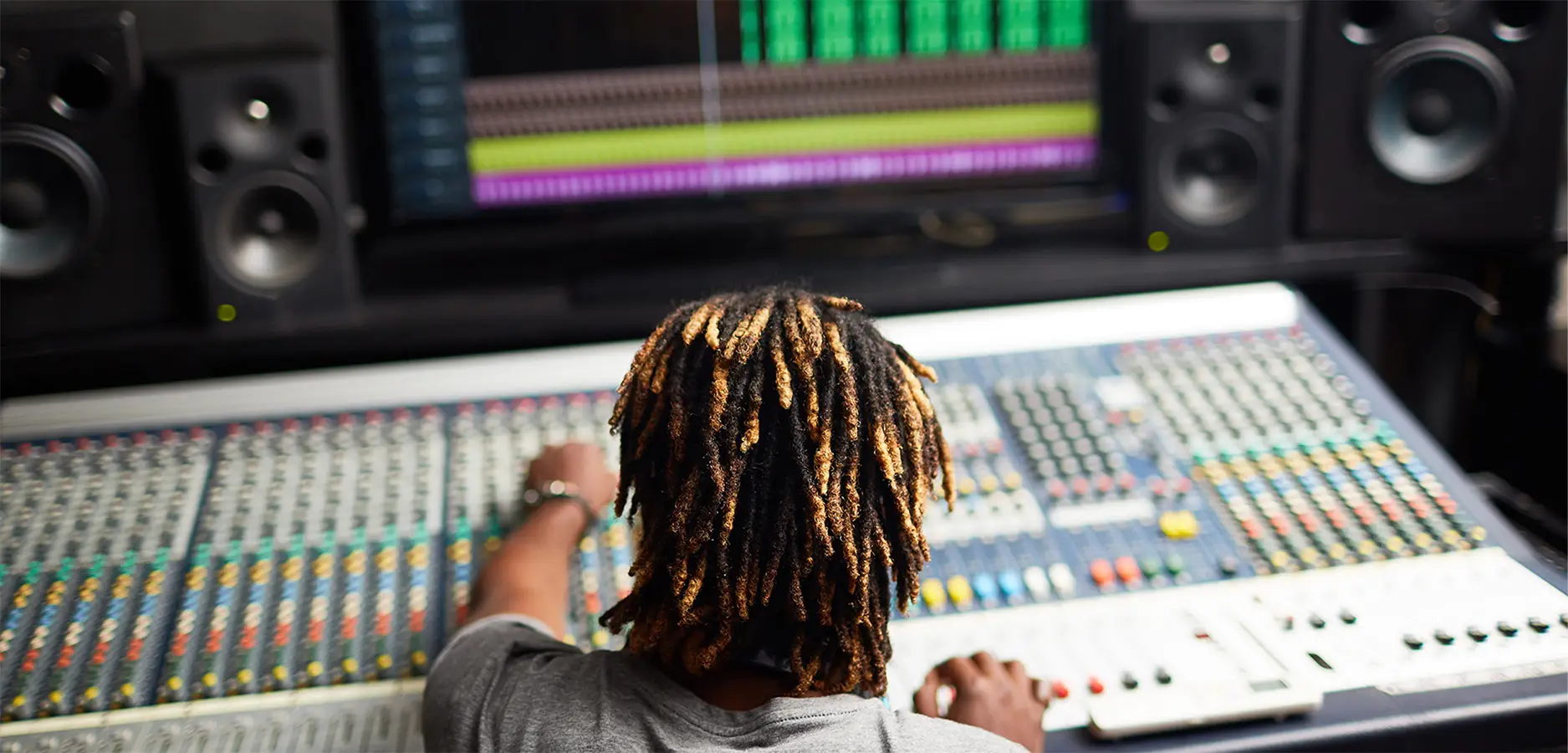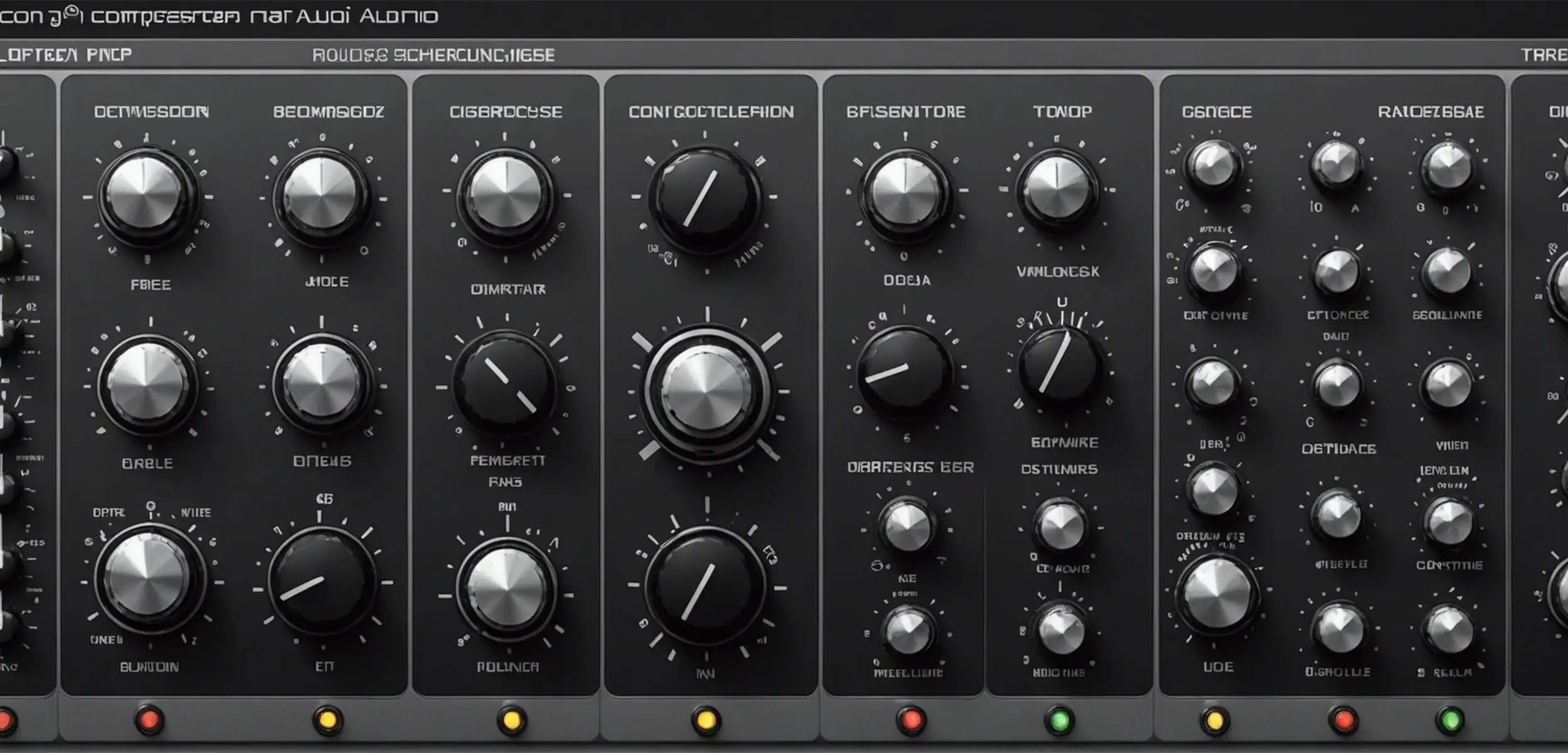Audio compressors are essential tools in electronic music production, shaping and refining sound to enhance a track’s dynamics and impact.
This article explores eight innovative ways compressors are used creatively in electronic music, offering producers techniques to achieve professional, polished, and unique sonic results.
Key Takeaways
- Audio compressors shape and refine sound in electronic music.
- Sidechain compression creates rhythmic pumping effects.
- Parallel compression enhances dynamics without losing clarity.
- Multiband compression targets specific frequency ranges.
- Upward compression boosts quieter elements for richer depth.
- Downward compression smooths out peaks for balanced output.
- Dynamic EQ compression adjusts EQ based on signal levels.
- Transient shaping enhances or reduces attack and sustain.
- Glue compression unifies multiple tracks for cohesive sound.
Creative Use of Audio Compressors in Electronic Music
Sidechain Compression
Sidechain compression, a staple in electronic music, creates a rhythmic pumping effect. This technique ducks the volume of one track, often the bass, in response to another, usually the kick drum.
By setting the compressor to trigger off the kick drum, producers achieve a synchronized dynamic shift, giving the mix a breathing effect that enhances groove and energy.
Parallel Compression
Parallel compression, or New York compression, involves blending a heavily compressed version of a track with the original, uncompressed signal. This adds thickness and punch while preserving transients and dynamics.
Producers utilize this technique to make drums stand out, adding weight and presence without sacrificing clarity.
Multiband Compression
Multiband compression divides the audio spectrum into separate frequency bands and applies individual compression settings to each. This method enables precise control over problematic areas, such as taming harsh highs or enhancing muddy lows.
In electronic music, it ensures a balanced mix by treating different frequency ranges independently, enhancing overall sound quality.
Upward Compression
Upward compression increases the volume of quieter elements without affecting louder ones. This results in a richer, more detailed soundscape.
Producers use it to bring out ambient textures, subtle synth layers, or reverb tails, adding depth and complexity to their tracks. It’s particularly effective in genres like ambient and chillout where intricate details are crucial.
Downward Compression
Downward compression reduces the volume of signals above a certain threshold, evening out dynamic range. This technique smooths out peaks, ensuring a cohesive and controlled output.
It’s commonly used on vocal tracks to maintain consistency and on basslines to keep low frequencies tight and punchy, essential for driving electronic music’s rhythmic foundation.
Dynamic EQ Compression
Dynamic EQ compression combines equalization with compression, adjusting the EQ settings based on the signal’s level. This hybrid approach allows for more responsive and context-sensitive processing.
It’s often used to control frequency buildups or resonances that occur at varying intensities, creating a more polished and dynamic mix.
Transient Shaping
Transient shaping enhances or reduces the attack and sustain of audio signals. By precisely manipulating these elements, producers can control the punch and presence of individual sounds.
This technique is frequently applied to drums and percussive elements to ensure they cut through the mix, adding impact without overwhelming other components.
Glue Compression
Glue compression, typically used on the master bus or group tracks, helps unify multiple elements into a cohesive whole. By applying mild compression to the overall mix, it smooths out discrepancies and creates a more polished sound.
This technique maintains the energy and dynamism of individual tracks while ensuring a balanced and unified final product. It’s essential for achieving a professional-sounding mix that feels interconnected and seamless.
Conclusion
By leveraging these eight creative compressor techniques, electronic music producers can significantly enhance their soundscapes.
From rhythmic effects to dynamic control and cohesion, applying these methods allows for more intricate and professional productions.
Mastering these compressor uses can elevate track quality and impact.
Frequently Asked Questions
What is sidechain compression?
Sidechain compression ducks the volume of one track in response to another, creating a rhythmic pumping effect. It’s commonly used with a kick drum to synchronize dynamics.
How does parallel compression work?
Parallel compression blends a heavily compressed version of a track with the original signal, enhancing thickness and punch without losing clarity.
What is the purpose of multiband compression?
Multiband compression divides the audio spectrum and applies individual compression settings to each frequency band, ensuring a well-balanced mix.
When should upward compression be used?
Upward compression is ideal for boosting quieter elements, adding depth and detail to ambient textures and subtle synth layers.
What does downward compression do?
Downward compression reduces the volume of signals above a certain threshold, evening out the dynamic range and ensuring consistency.
How does dynamic EQ compression differ?
Dynamic EQ compression adjusts EQ settings based on the signal’s level, offering responsive and context-sensitive processing.
What is transient shaping?
Transient shaping manipulates the attack and sustain of audio signals, enhancing or reducing punch and presence of sounds.
Why use glue compression?
Glue compression unifies multiple tracks into a cohesive whole, ensuring a balanced and polished final mix.
Read other articles
-
 April 4, 2025
April 4, 2025Stop Letting AI Master Your Tracks (Here’s What You’re Missing)
Stop Letting AI Master Your Tracks (Here’s What You’re Missing)
-
 April 4, 2025
April 4, 2025AI Mastering vs Human Ears: Why Real Experience Still Wins
AI Mastering vs Human Ears: Why Real Experience Still Wins
-
 April 4, 2025
April 4, 2025What You Learn from Watching Your Track Get Mixed
What You Learn from Watching Your Track Get Mixed

